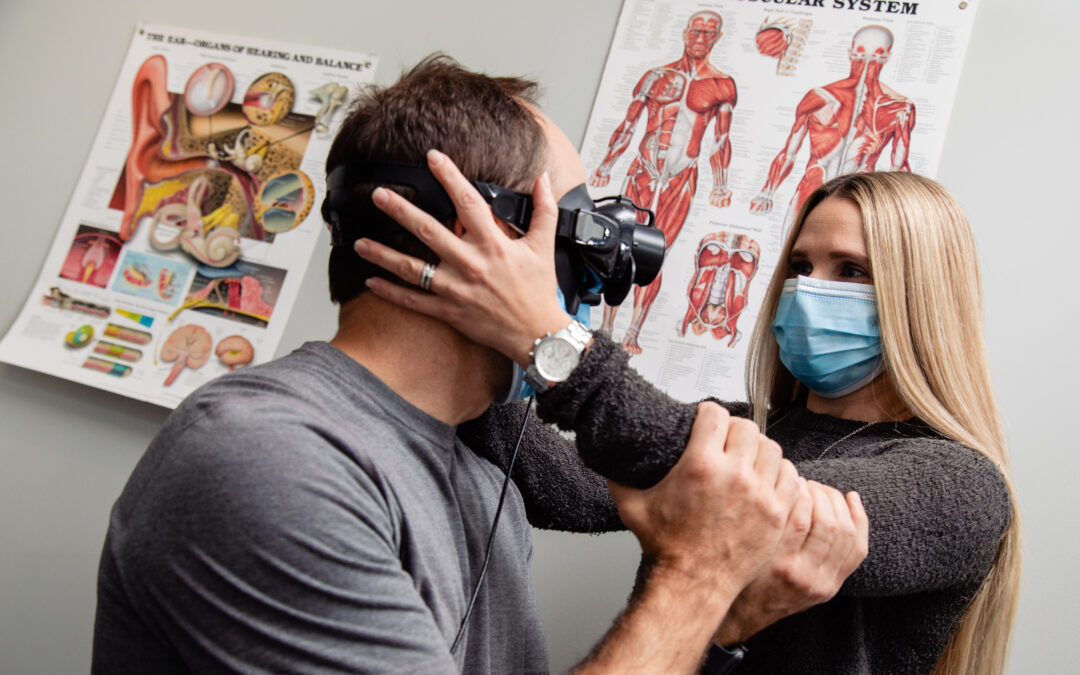The other day we had a patient whose history seemed like pretty straight forward BPPV. On examination, I anticipated there being nystagmus. I also expected the patient to tighten their grip on my arm with Dix-Hallpike testing, but to my surprise Dix-Hallpike testing was negative when tested to the right and left. This was a bit anticlimactic and somewhat disappointing.
Have you ever been in this situation? Testing tells you one thing, but your gut says otherwise, so now what do you do? If you are not sure what to do next or are curious what we do at North 49, then this post is for you. In this post we will cover 7 things we consider to help us rule in/out BPPV when the initial testing is negative.
What Is BPPV?
If you are just starting out treating patients with dizziness and need a bit of a refresher regarding BPPV, check out this link first.
What Is Considered A Positive Dix-Hallpike Test?
Before we get too far we should review what a positive test is. For the Dix-Hallpike test to be positive there must be dizziness and nystagmus that occur simultaneously with the change in position.
Consideration #1: Are You Using Infrared or Frenzel Goggles?
With inner ear problems any associated nystagmus may not be noticeable in room light. So, to make sure you are not missing the nystagmus from Dix-Hallpike testing perform the testing with infrared or frenzel goggles.
#2: Did You Use Proper technique?
The Dix-Hallpike test is a rather straight forward test. However, if we forget to do the key steps, testing may provide a false negative. Four key steps to remember are:
- Keeping the head turned 45o throughout the entire test. This can be a challenge with patients who have limited neck mobility, but remember it is the change in head position in space that we are looking for.
- Having the neck ending up with 20o of extension. You do not always need 20o of extension to get a positive test, but if testing is negative and the neck is not extended try it again with the neck extended.
- Move your patient quickly from the sitting to the lying position.
- Holding the neck in 45o of rotation and 20o of extension while the patient is supine for at least 30 seconds. Remember that it take time for the otoconia to move in the endolymph (or at least that is what the theory states is happening), so be patient.
#3: Use The Roll Test To Help Rule Out Lateral Canal Involvement.
Remember that 85-95% of the time BPPV affects the posterior canal and 5-15% of the time it affects the lateral canal (Bhattacharyya 2017). So, if Dix-Hallpike testing is negative, make sure to perform the roll test for the lateral (horizontal) canal.
To see a brief video demonstration on how to perform the Roll test click here.
#4: Try The Dix-Hallpike Test Again.
We have not picked this up in a course, but have found that sometimes the initial Dix-Hallpike test can be negative. However, after we test the other side, perform the roll tests in both directions, then repeat the Dix-Hallpike exactly the same way we just did, for some reason it is positive. Maybe the otoconia are stuck in there? Who knows?
#5: Consider The Loaded Dix-Hallpike Test.
Over this past year we have come across several references to the Loaded Dix-Hallpike test. If you are not familiar with it here is a link to a 2020 journal article describing it and a link demonstrating how to perform it.
#6: Try The Modified Epley Maneuver.
Sometimes, after trying all of the above suggestions, testing for BPPV can still be negative. We have to remember that the Dix-Hallpike test is the “Gold Standard” test, but is not 100%. Lopez-Escamez in 2000 found it to have a sensitivity of 82% and a specificity of 72% amongst specialty clinicians. So, if you really think it could be BPPV there is no harm in doing a canalith repositioning technique for both posterior canals. Remember, that if it is BPPV, it will be a posterior canal that is affected 85-95% of the time. Also, if it is BPPV there should be a rapid improvement with an 84% chance of symptom resolution with one treatment session.
#7: Reconsider Your Diagnosis.
If you have done all of the above and testing for BPPV is still negative, then you should reconsider your diagnosis.
What About Anterior Canal Involvement?
You may be thinking, what about the anterior canal? The odds of the anterior canal being affected are extremely rare, but in those rare cases, anterior canal involvement should be picked up with the Dix-Hallpike test.
Conclusions:
Dizziness is common and Dix-Hallpike testing is a great test to determine if the dizziness is coming from BPPV. For various reasons there could be a false negative, so we covered some options to consider if we believe the dizziness is due to BPPV, but Dix-Hallpike testing is negative.
If you have any questions, feel free to contact us at North 49.


